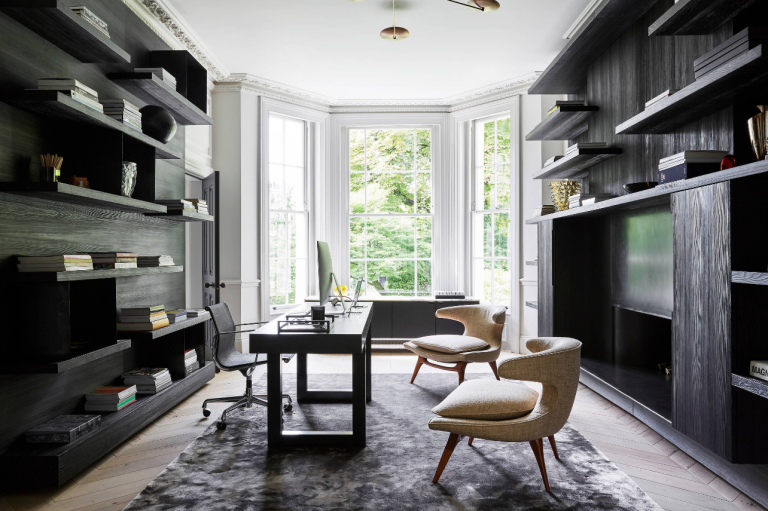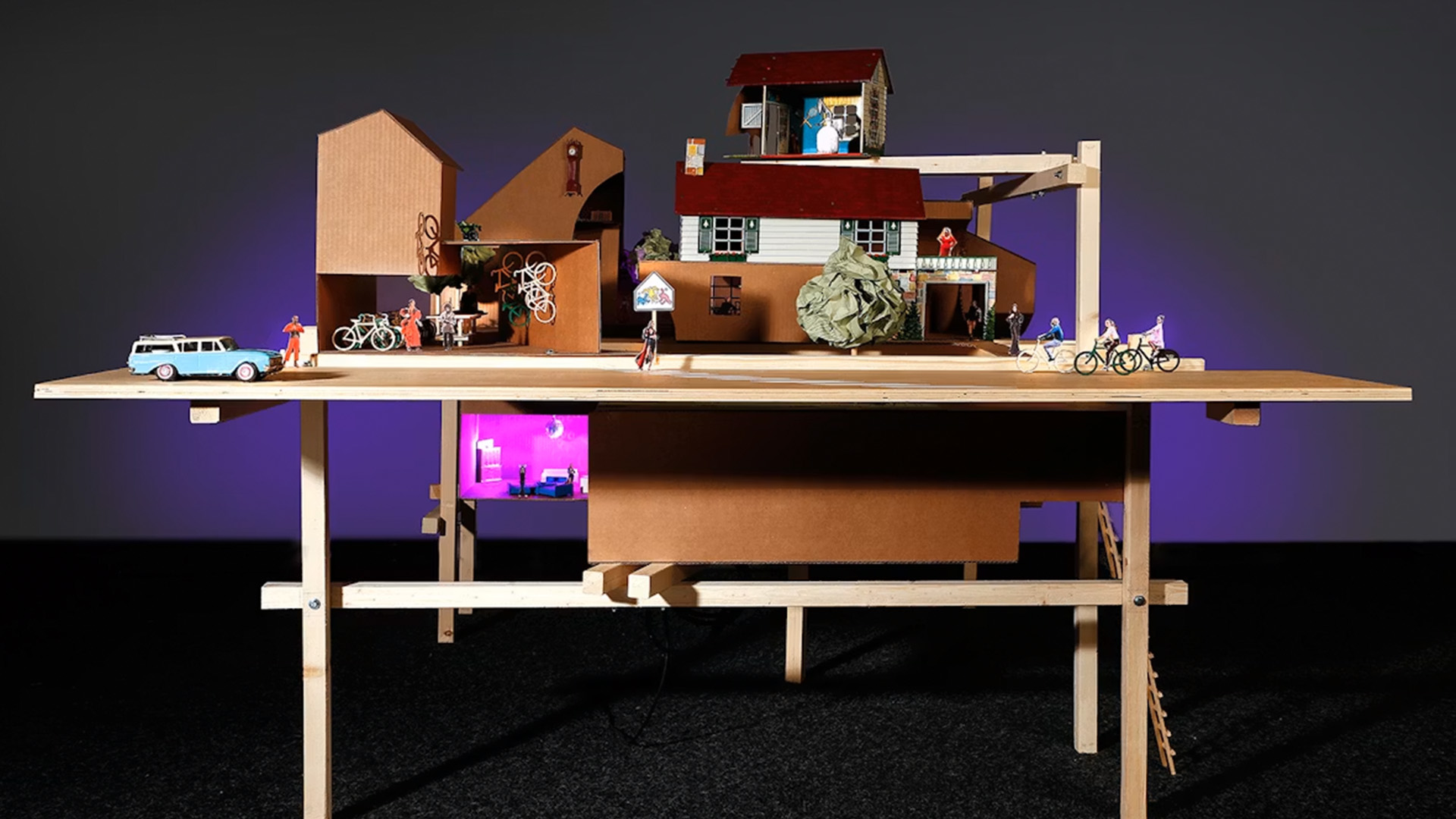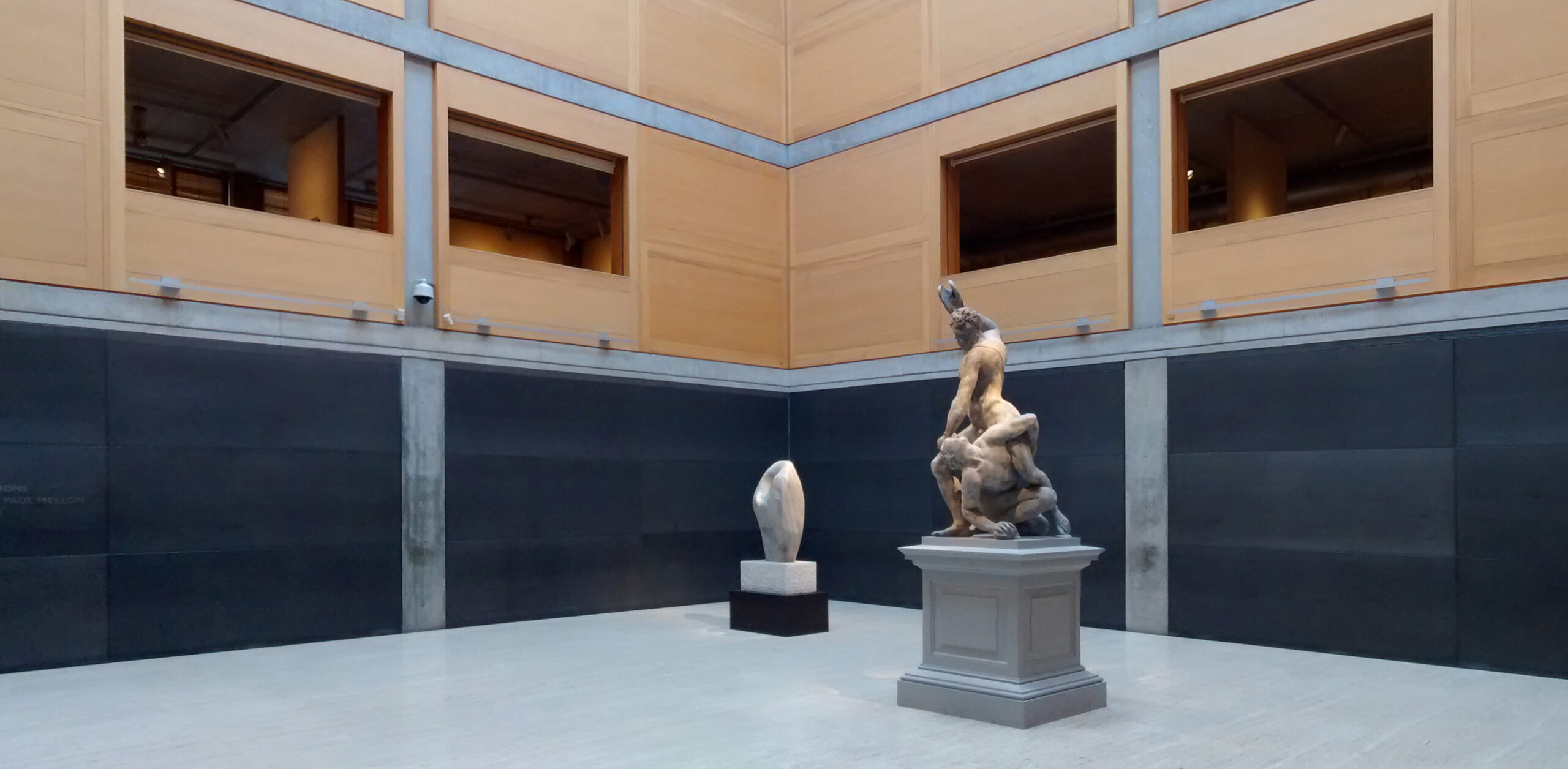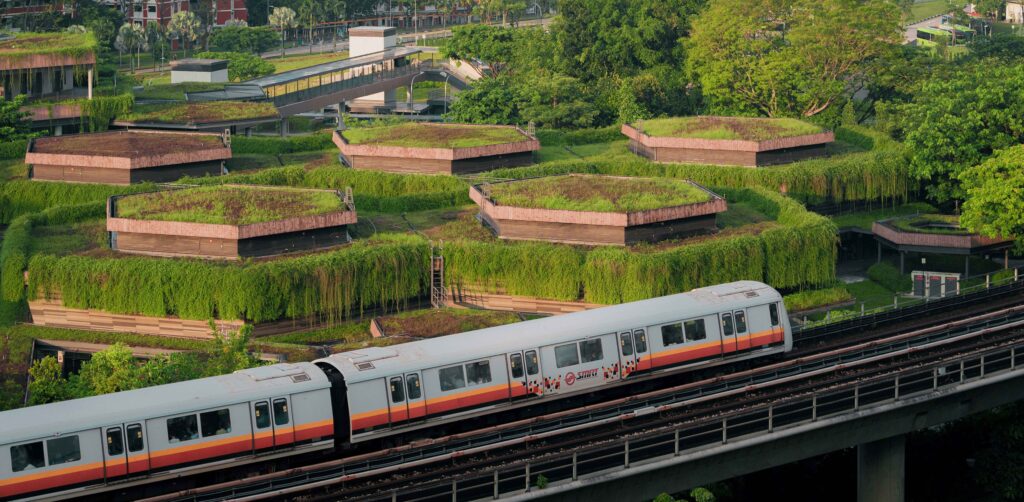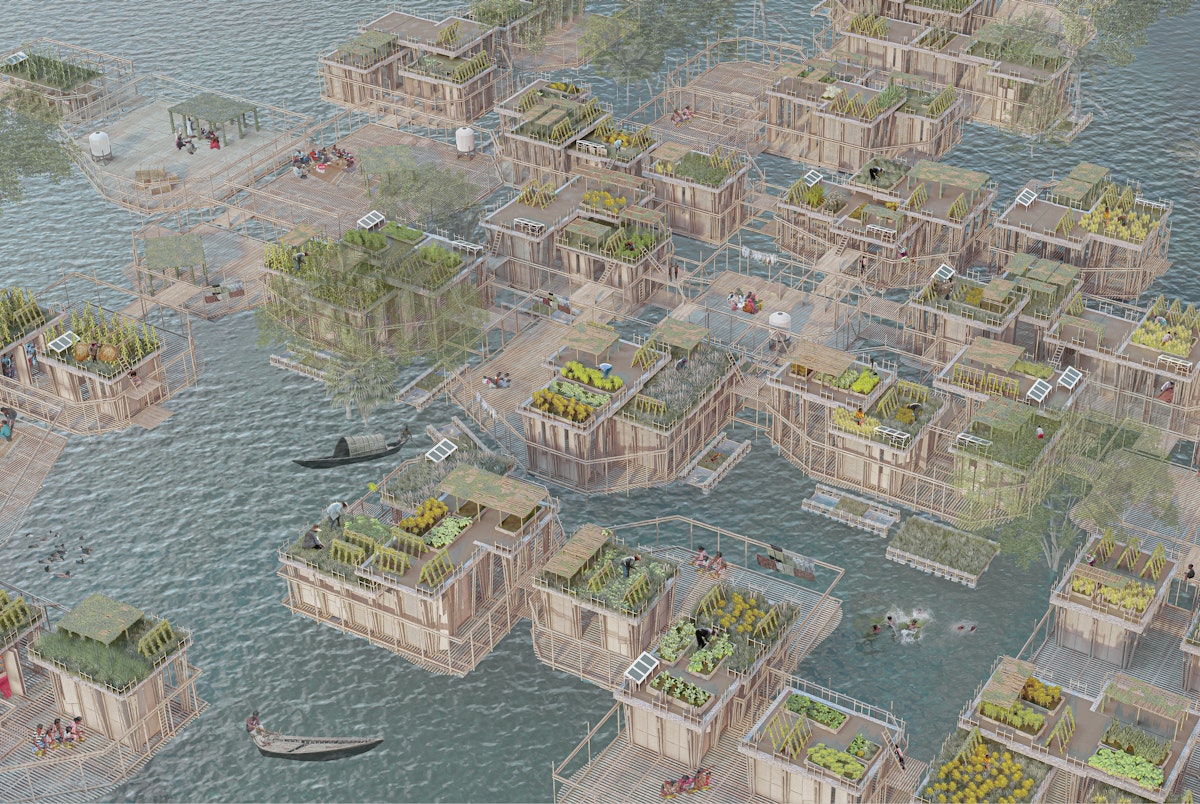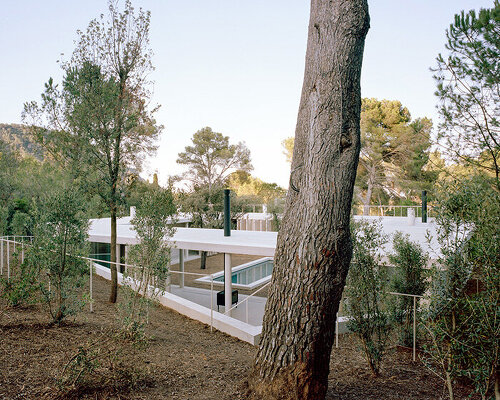Five striking Snøhetta buildings that you can walk all over


The recently unveiled Shanghai opera house is the latest Snøhetta project designed to let visitors wander over its roof. Here, we have collected five of the studio's buildings with walkable exteriors.
Since its first major commission, the Bibliotheca Alexandrina in Egypt, Snøhetta has aimed to integrate landscape into its architecture.
This was a core element of its competition-winning design for the Oslo Opera House, which pioneered the concept of architecture as landscape. This building popularised walkable roofscapes, with accessible roofs appearing in cities around the world, and the form became a calling card for Snøhetta.
Read on to discover five of the best times Snøhetta has created a walkable roof:
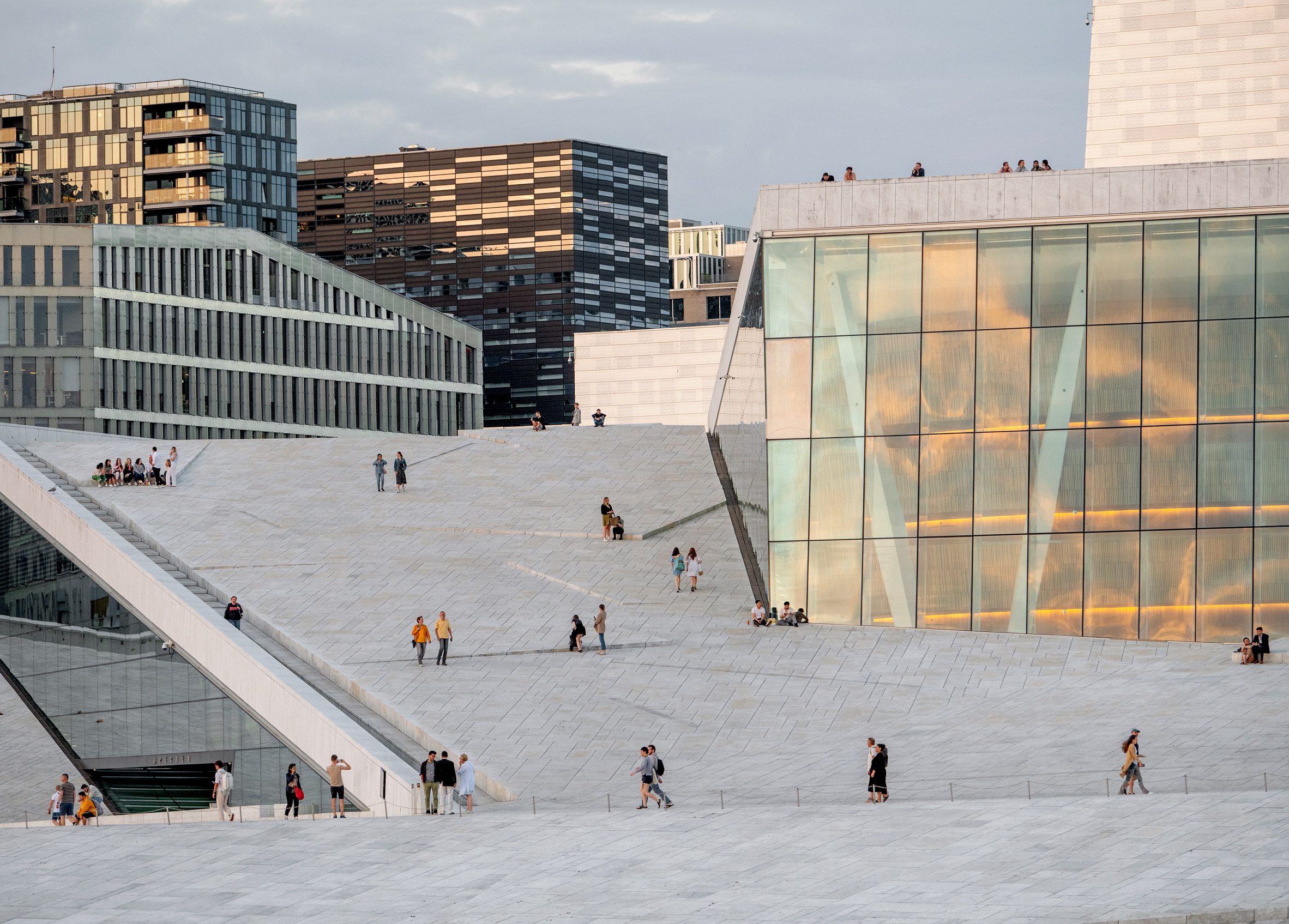
Oslo Opera House, Norway, 2007
The one that started it all – Oslo Opera House. Completed in 2007, it made Dezeen's list of the 25 most significant buildings of the 21st century so far.
The opera house, which houses Norway's National Opera and Ballet, has a roof that also functions as a sloping public plaza.
Find out more about Oslo Opera House ›

Lascaux IV Caves Museum, France, 2017
Located at the Lascaux Caves in France, this cave museum has a distinctive jagged roofline that visitors can walk up.
The whole building, which houses replicas of cave paintings, was designed to resemble a "fissure" in the landscape and is kept at a constant cave-like temperature.
Find out more about Lascaux IV Caves Museum ›

This community centre was designed for a new residential area in Mölnlycke, Sweden, in a former quarry. Snøhetta wanted it to rise "like a spine in the landscape" and used timber for its upper floors.
The elongated building's walkable roof follows the natural rise of the terrain, and has been planted with moss, heather, blueberries and other native plants.
Find out more about Lakehouse ›

Shanghai Grand Opera House, China, 2025
A spiral staircase roof decorates this opera house in Shanghai, which is nearing completion. The dramatic concrete structure was designed by Snøhetta in collaboration with Chinese studio ECADI to resemble an unfolding fan and evoke dancerly movements.
Located next to the Huangpu River, Shanghai Grand Opera House will have three performance stages, including a main opera hall that will seat up to 2,000 visitors.
Find out more about Shanghai Grand Opera House ›
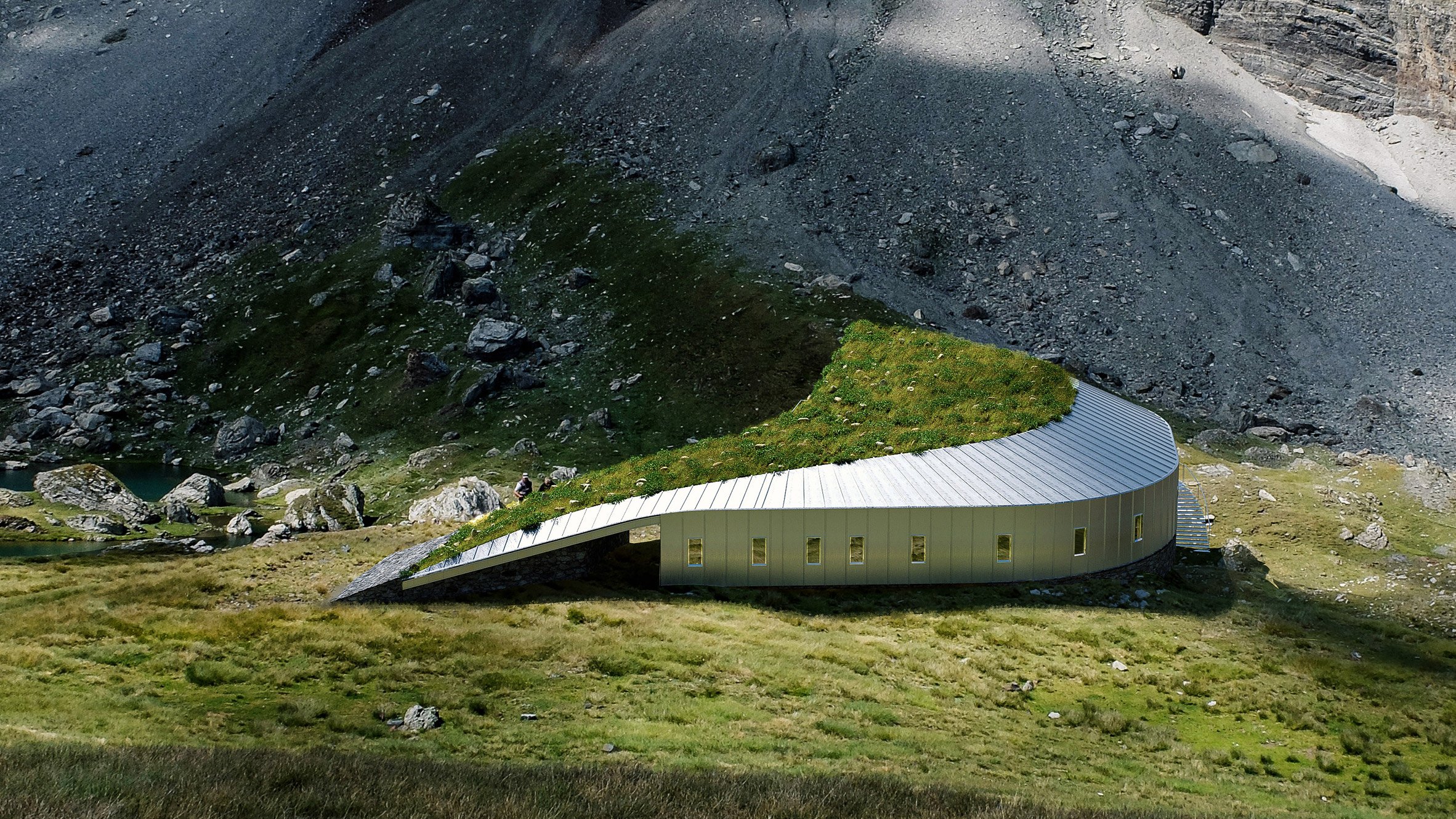
Refuge de Barroude, France, under construction
Currently under construction, Refuge de Barroude is a hikers' refuge in the Pyrenees mountains. Its curving form was informed by the surrounding topography.
A swooping grass roof covers the aluminium-clad building, which was designed to have a minimal impact on the surrounding flora and fauna.
"On site earthworks and concrete foundations are kept to a minimum as the structure 'skims' the existing ground," said Snøhetta.
Find out more about Refuge de Barroude ›
The post Five striking Snøhetta buildings that you can walk all over appeared first on Dezeen.



















